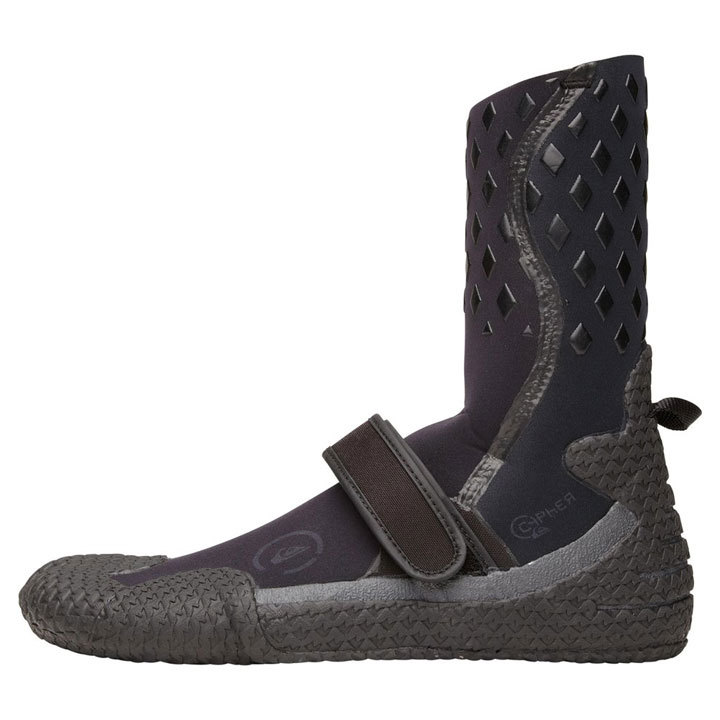Types of Wetsuits

- These types of wetsuits cover your entire body and can be found in many different thicknesses made for different water temps. These wetsuits give you full protection against frigid water, water rash, and UV rays.
Shorty Wetsuits/Springsuits (Mens) (Womens)

- A neoprene suit made with shorter legs and arms that provide little to no frigid water protection. They are primarily used in warm water temperatures and for UV protection.

- This type of neoprene suit has the coverage area similar to a long sleeve t-shirt. They are made out of 0.5 mm - 2 mm neoprene that are primarily used for warm weather water sports.
Rashguards (Mens & Womens)

- A light shirt made out of Lycra or other UV resistant materials that is used to protect against sun and sand,sometimes worn under a wetsuit to prevent rash.
Wetsuit Accessories


- Wetsuit Gloves: neoprene gloves are intended to keep your hands warm for cold water activities.
- Wetsuit Boots: neoprene or rubber boots intended to keep your hands warm for cold water activities.
Wetsuit Fit
A wetsuit should fit like a second layer of skin. A proper fitting wetusit should be hard to put on dry leaving no excess room in the torso, arms, or knees/legs. You should be slightly restricted while lifting your arms over your head and if you feel a lot of pressure during this movement, then the suit may be too small. Here are some guidelines:
| Size | Height | Weight |
| Small | 5'7" - 5'9" | 135 - 155lbs |
| Medium | 5'8" - 5'10" | 150 - 170lbs |
| Large | 5'10" - 6'0" | 170 - 190lbs |
| X-Large | 5'11" - 6'1" | 190 - 210lbs |
| XX-Large | 6'0" - 6'3" | 210 - 230lbs |
Types of Stitching
- Overlock Stitch: This style is recommended for 65 degrees and up. The seams are stitched on the inside and you won't see any stitching from the outside. This results in bulge on the inside of the wetsuit, which can be uncomfortable. This method is the simplest way of stitching, and the least effective at keeping water out.

- Flatlock Stitch: This stitch is recommended for 55 degree water and up. This stitching involved laying one panel edge over the other, then stitching through the neoprene. The stitching results look like railroad tracks with the interior and exterior looking the same. The downside of this stitching is the process creates many holes and is prone to high water penetration, but it will be more comfortable then overlock.

- Blindstitch: This style of stitching is recommended for 55 degree water and below. The edges of the neoprene are placed end on end and glued together. They are then stitched on the inside, but the stitching does not go all the way through to the outside. The result is watertight, flexible seams. This is the ideal seam for cold water temps and often found in higher quality suits.

Types of Sealing Seams
- Glued Seams: The neoprene is glued together prior to stitching which increases the strength of the seam and creating a waterproof seal.
- Spot Taped Seams: Tape is glued to the inside of the seam in critical areas to add additional strength where needed.
- Fully Taped Seams: Tape is glued to the inside of every seam. Neoprene tape can be used to ensure there is no loss in flexibility.
- Liquid Taped: The ultimate seam seal. A special liquid rubber is applied to the inside seam which makes it 100% waterproof.
Temperature Guide
An important aspect while choosing your wetsuit is the amount of warmth you need. This can be decided by the thickness of the neoprene which is measured in millimeters. There are three numbers that represent thickness. The first being the thickness of neoprene in the torso area, the second number represents the thickness of the neoprene in the extremities, and the third number (if present) represents the neoprene thickness in the arms. The thickest neoprene should be in your torso which is where your core maintains body heat. Here is our temperature guide:
| Water Temperature Range | Wetsuit Thickness | Wetsuit Type | Type of Seal |
| 77F or Above | N/A | Rashguard | N/A |
| 72F - 77F | 0.5 mm - 2/1 mm | Top / Shorty | N/A |
| 68F - 72F | 2 mm - 3/2 mm | Springsuit / Full Suit | Flatlock |
| 64F - 68F | 3/2 mm - 4/3 mm | Full Suit + Boots | Sealed |
| 59F - 64F | 4/3 mm - 5/4/3 mm | Full Suit + Boots + Gloves | Sealed and Taped |
| 54F - 59F | 5/4 mm - 5/4/3 mm | Full Suit + Boots + Gloves | Sealed and Taped |
| 54F or Below | 6/5 mm - 6/5/4 mm | Full Suit + Boots + Gloves | Sealed and Taped |
In addition to water temperature, consider the following
- Air Temperature
- Wind Speed
- Your Sensitivity to Getting Cold
- Body Activity
